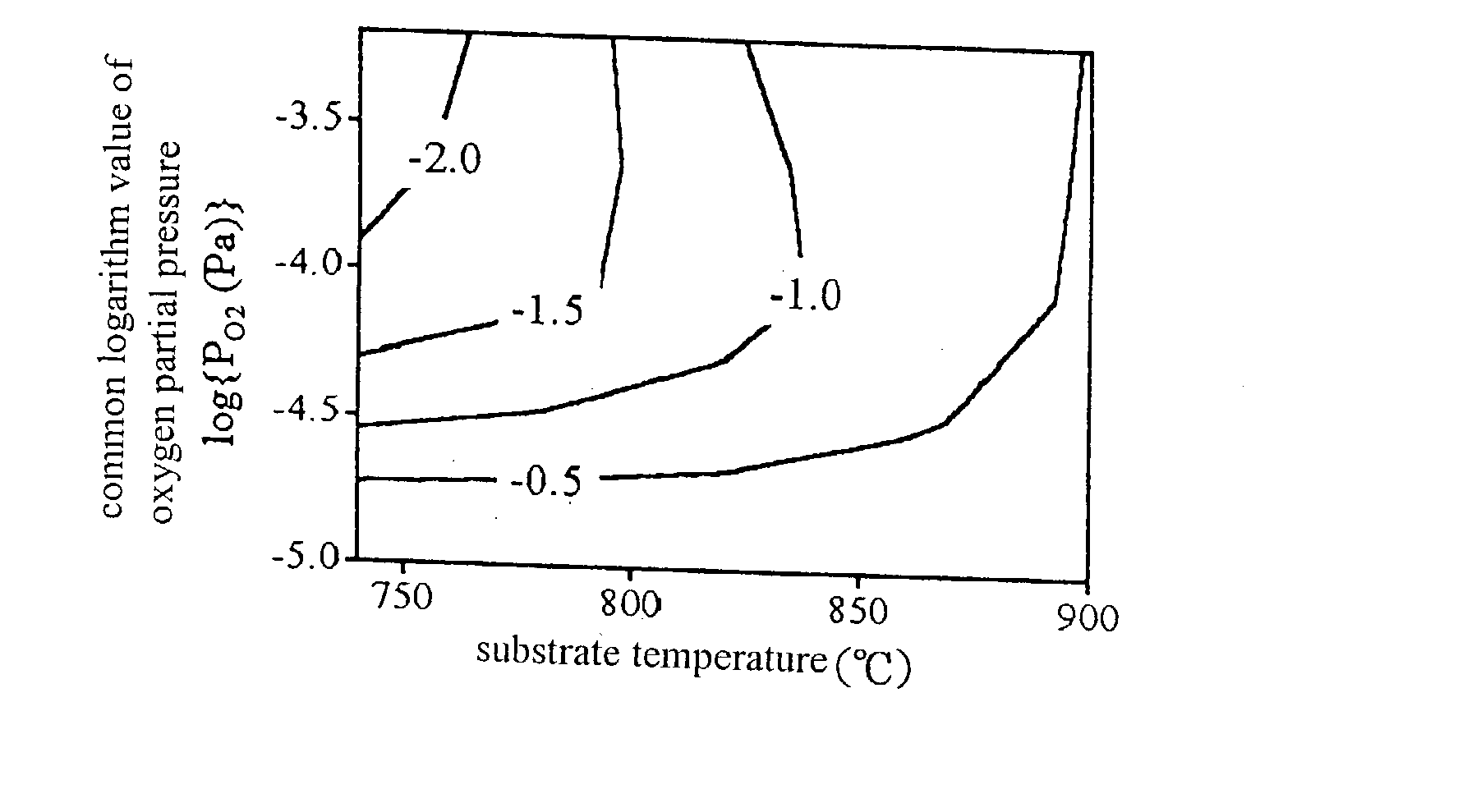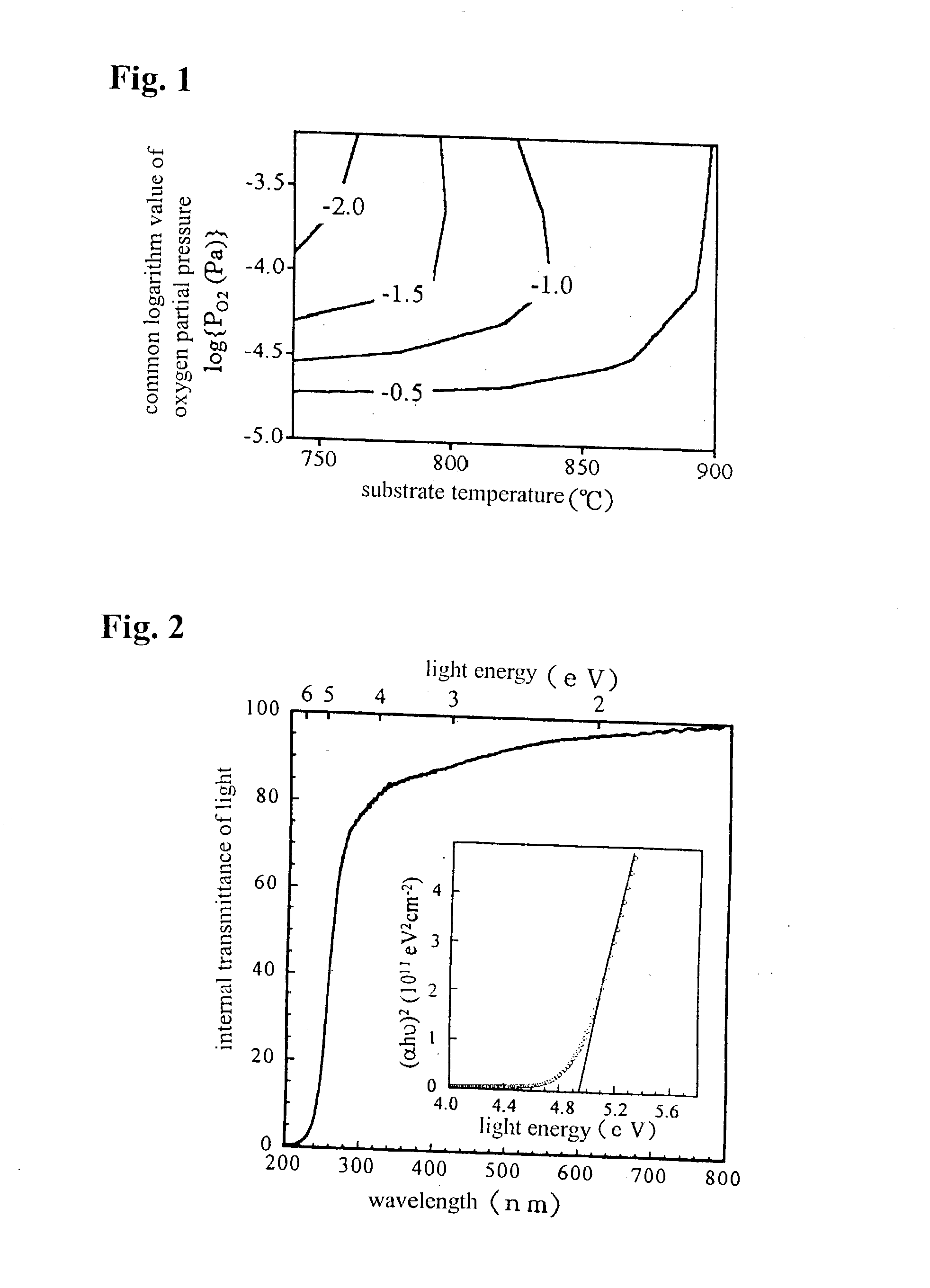Ultraviolet-transparent conductive film and process for producing the same
- Summary
- Abstract
- Description
- Claims
- Application Information
AI Technical Summary
Benefits of technology
Problems solved by technology
Method used
Image
Examples
example 4
[0058] A silica glass substrate was installed in the laser-ablation ultra-high vacuum chamber. Then, the substrate is heated in the range of 700 to 900.degree. C. by the IR lamp heater, and oxygen gas having a partial pressure in the range of 1.times.10.sup.-5 to 1.times.10.sup.-3 Pa was introduced into the chamber. A high-purity Ga.sub.2O.sub.3 containing 1 mol % of SnO.sub.2 as a dopant was used as a target, and Ga.sub.2O.sub.3 was deposited on the silica glass substrate opposed to the target at a distance of 30 mm by irradiating the target with the ArF excimer laser beam. A resulting film has a thickness of about 100 nm.
[0059] A conductivity of the thin film with respect to the substrate temperature and oxygen partial pressure is shown in FIG. 1 as a contour diagram. The horizontal axis, vertical axis and contour indicate the substrate temperature, the common logarithm value of the oxygen partial pressure and the common logarithm value of the conductivity, respectively. At a subs...
example 5
[0060] As in Example 4, Ga.sub.2O.sub.3 was deposited on a silica glass substrate. Under the conditions with a substrate temperature of 880.degree. C. and an oxygen partial pressure of 6.times.10.sup.-5 Pa, a .beta.-Ga.sub.2O.sub.3 thin-film having a conductivity of 1.0 S / cm was obtained. This thin film has a mobility of 0.44 cm.sup.2 / Vs and a carrier density of 1.4.times.10.sup.19 / cm.sup.3. A light transmittance spectrum of the thin film is shown in FIG. 2. The horizontal and vertical axes indicate the wavelength of light and the internal transmittance (int) of light, respectively.
[0061] The term "internal transmittance" means a light transmittance in which the contribution of the light reflection on the surface of the thin film is removed therefrom; or a value calculated based on the formula T (int)=T (obs) / (100-R (obs)) using a light transmittance T (obs) and a reflectance R (obs) measured by the ultraviolet / visible spectrophotometer; or a percentage ratio of a transmitted light ...
PUM
| Property | Measurement | Unit |
|---|---|---|
| Temperature | aaaaa | aaaaa |
| Fraction | aaaaa | aaaaa |
| Fraction | aaaaa | aaaaa |
Abstract
Description
Claims
Application Information
 Login to View More
Login to View More - R&D
- Intellectual Property
- Life Sciences
- Materials
- Tech Scout
- Unparalleled Data Quality
- Higher Quality Content
- 60% Fewer Hallucinations
Browse by: Latest US Patents, China's latest patents, Technical Efficacy Thesaurus, Application Domain, Technology Topic, Popular Technical Reports.
© 2025 PatSnap. All rights reserved.Legal|Privacy policy|Modern Slavery Act Transparency Statement|Sitemap|About US| Contact US: help@patsnap.com


